Abstract
Under contract with the National Institute of Allergy and Infectious Diseases, the Trudeau Mycobacterial Culture Collection has been greatly expanded to provide for the scientific community a collection of representative strains of mycobacteria of biomedical importance. Problems concerned with the preparation, bottling, and distribution of such organisms have been dealt with and are detailed in this paper. Examination of collected data revealed that the temperature of storage and not the suspending menstruum was more important for prolonged survival of mycobacteria stored at subzero temperatures. For optimum results, mycobacteria may be suspended either in Dubos Tween-albumin broth or in Middlebrook 7H-9 liquid medium supplemented with ADC enrichment (commercial sources used) and stored at −70 C. Either of these suspending fluids supplied a growth-supporting medium for cultures which must be shipped long distances, often without refrigeration. To avoid sublimation of suspending medium during prolonged storage at −70 C (a problem inherent in many screw-capped containers), we have chosen to use vaccine-stoppered serum bottles sealed with aluminum crimp caps. The methods described have provided suspensions with (i) excellent viability over prolonged periods of storage, (ii) stable metabolic activities, and (iii) highly reproducible inocula for animal experiments.
Full text
PDF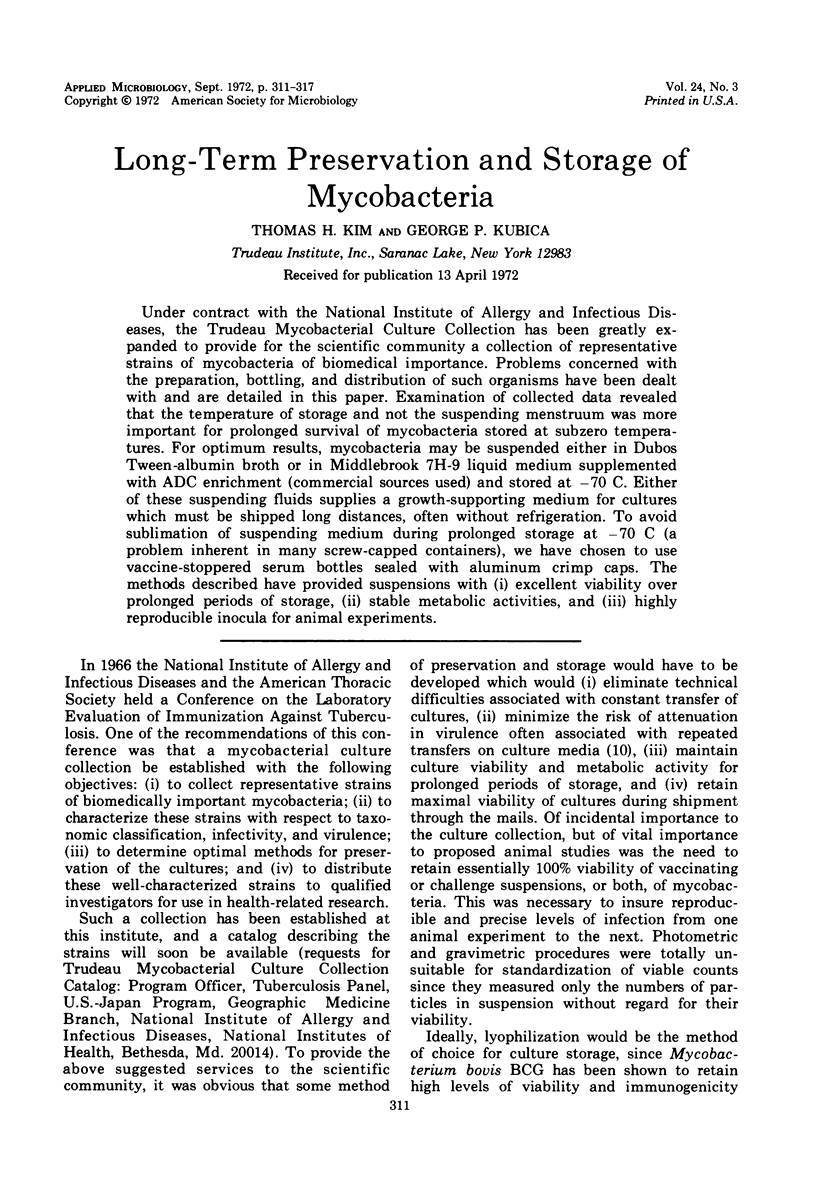
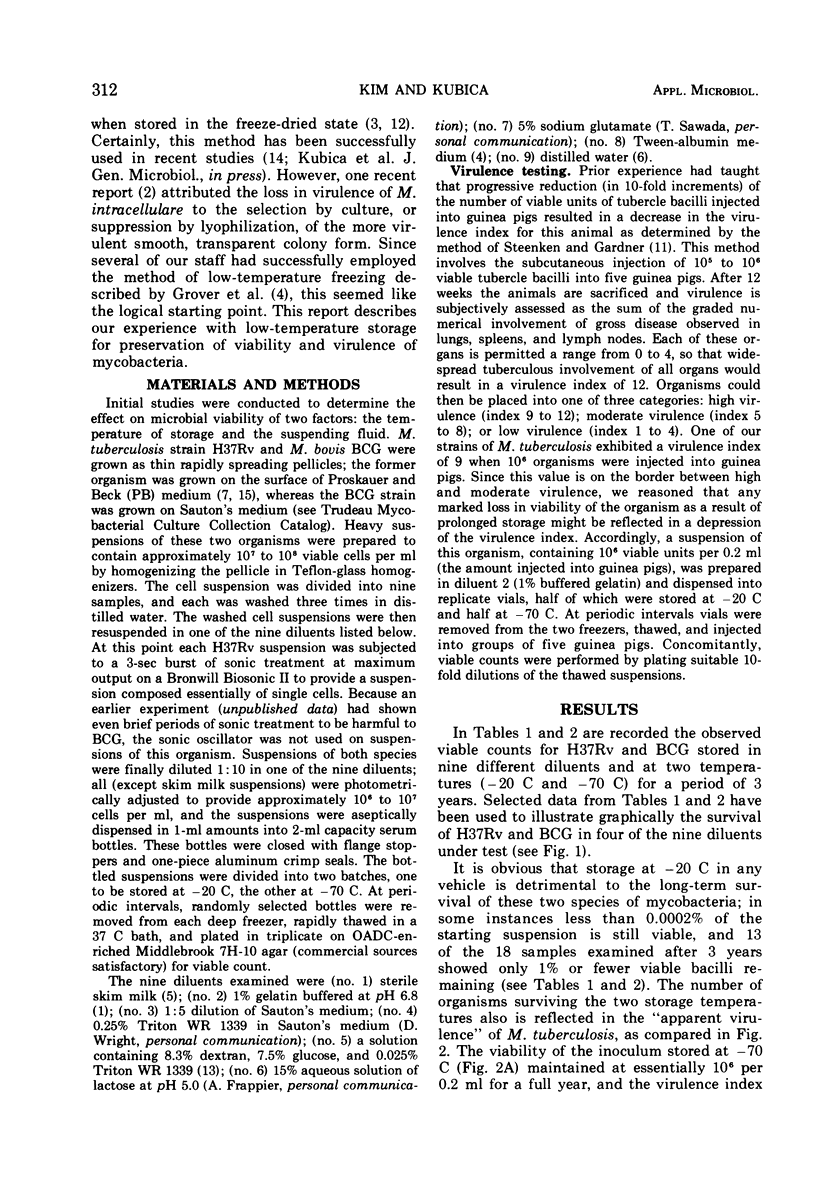
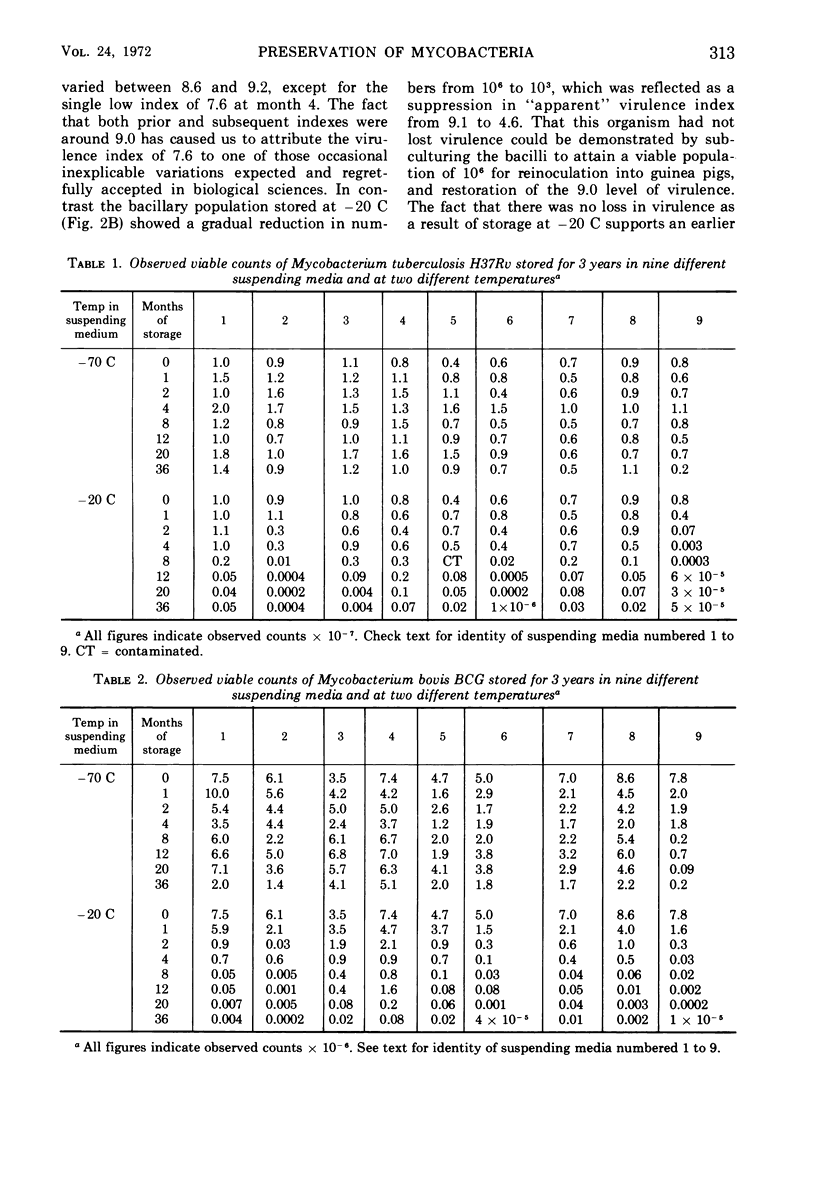
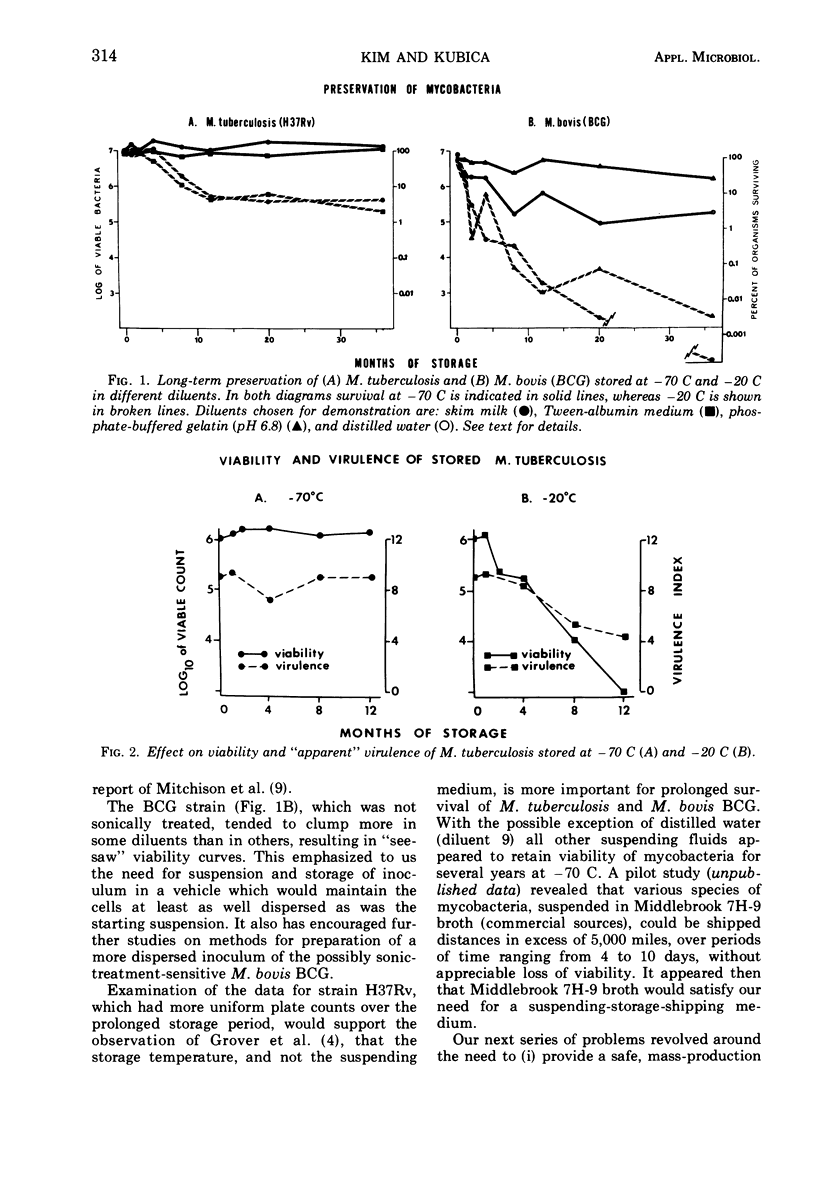
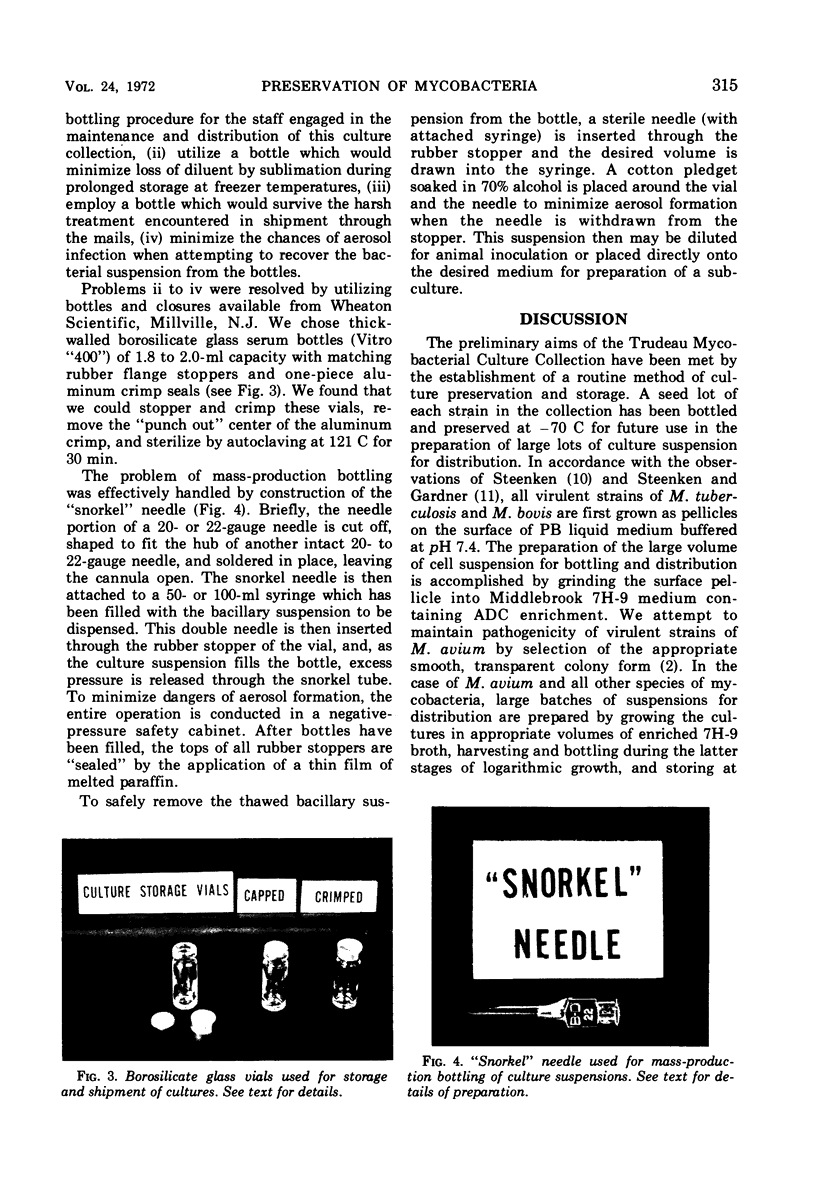
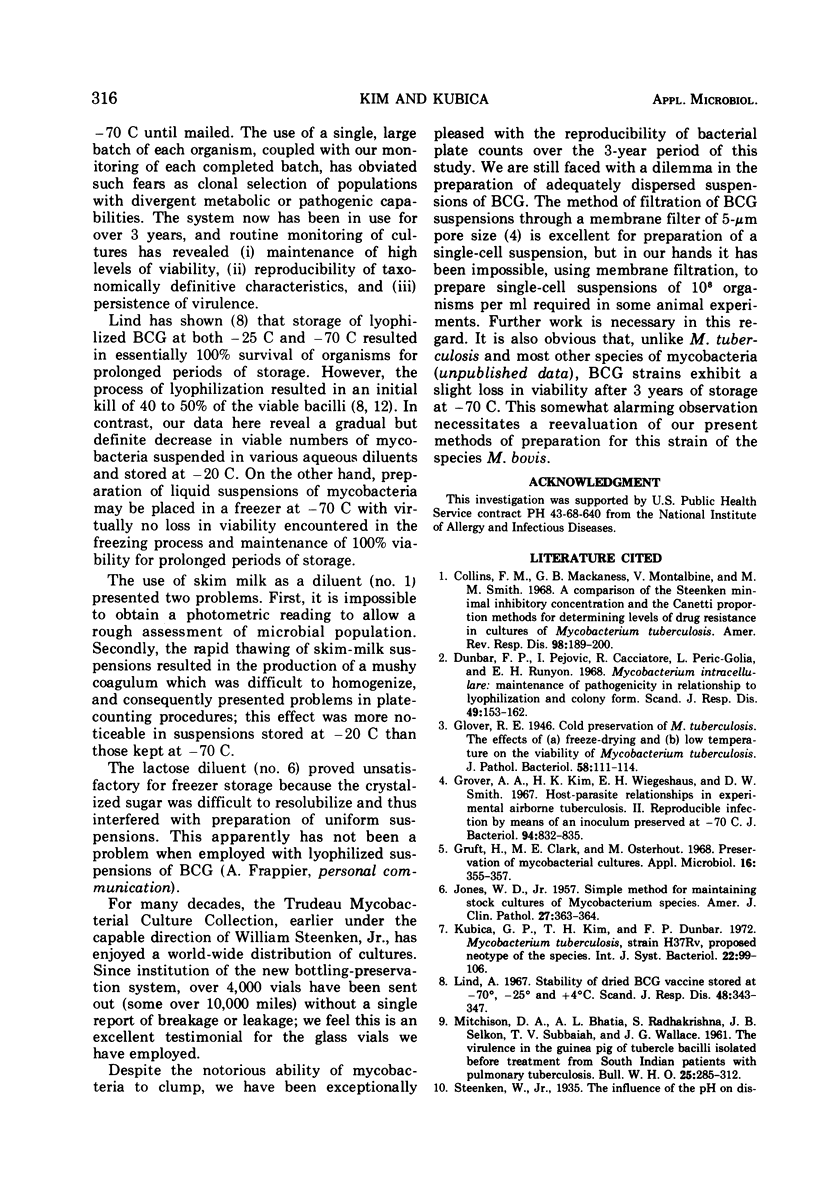
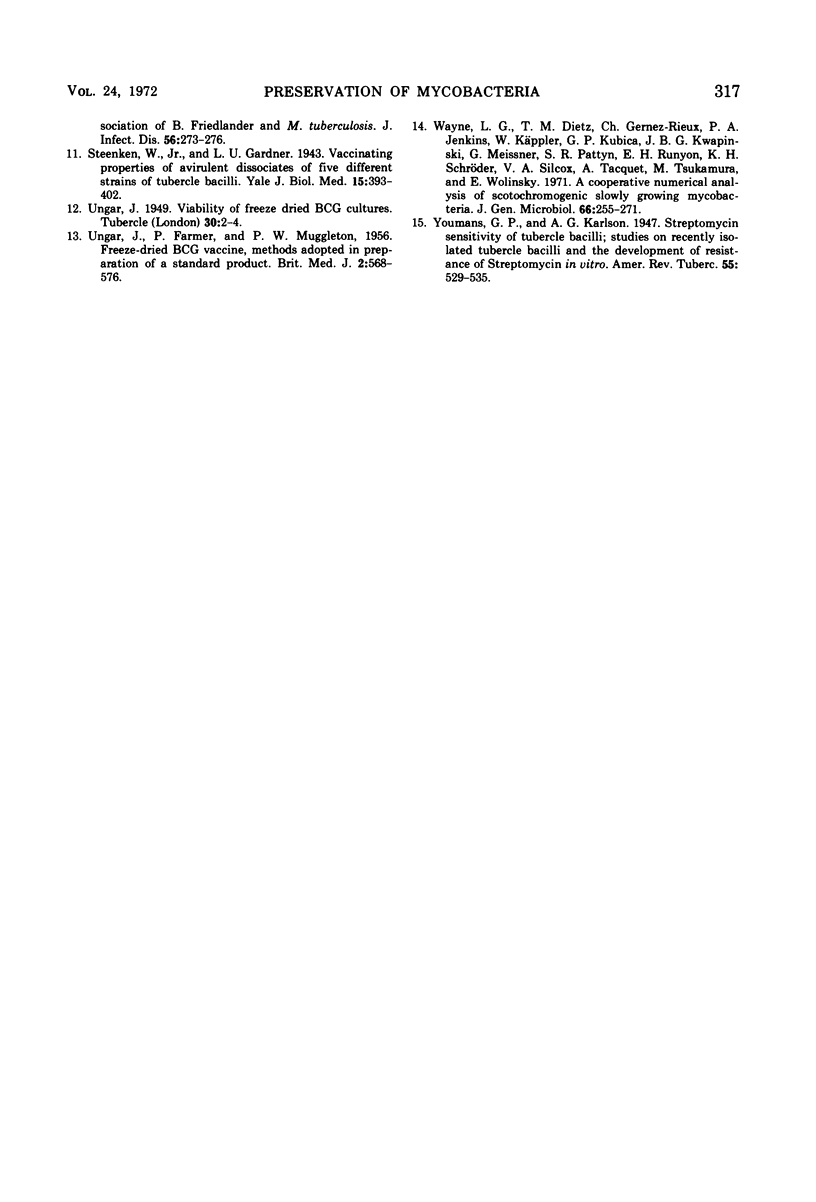
Images in this article
Selected References
These references are in PubMed. This may not be the complete list of references from this article.
- Collins F. M., Mackaness G. B., Montalbine V., Smith M. M. A comparison of the Steenken minimal inhibitory concentration and the Canetti proportion methods for determining levels of drug resistance in cultures of Mycobacterium tuberculosis. Am Rev Respir Dis. 1968 Aug;98(2):189–200. doi: 10.1164/arrd.1968.98.2.189. [DOI] [PubMed] [Google Scholar]
- Dunbar F. P., Pejovic I., Cacciatore R., Peric-Golia L., Runyon E. H. Mycobacterium intracellulare. Maintenance of pathogenicity in relationship to lyophilization and colony form. Scand J Respir Dis. 1968;49(2):153–162. [PubMed] [Google Scholar]
- FARMER P., MUGGLETON P. W., UNGAR J. Freeze-dried B.C.G. vaccine; methods adopted in preparation of a standard product. Br Med J. 1956 Sep 8;2(4992):568–571. doi: 10.1136/bmj.2.4992.568. [DOI] [PMC free article] [PubMed] [Google Scholar]
- Grover A. A., Kim H. K., Wiegeshaus E. H., Smith D. W. Host-parasite relationships in experimental airborne tuberculosis. II. Reproducible infection by means of an inoculum preserved at -70 C. J Bacteriol. 1967 Oct;94(4):832–835. doi: 10.1128/jb.94.4.832-835.1967. [DOI] [PMC free article] [PubMed] [Google Scholar]
- Gruft H., Clark M. E., Osterhout M. Preservation of mycobacterial cultures. Appl Microbiol. 1968 Feb;16(2):355–357. doi: 10.1128/am.16.2.355-357.1968. [DOI] [PMC free article] [PubMed] [Google Scholar]
- JONES W. D., Jr Laboratory suggestion: simple method for maintaining stock cultures of Mycobacterium species. Am J Clin Pathol. 1957 Mar;27(3):363–364. [PubMed] [Google Scholar]
- MITCHISON D. A., BHATIA A. L., RADHAKRISHNA S., SELKON J. B., SUBBAIAH T. V., WALLACE J. G. The virulence in the guinea-pig of tubercle bacilli isolated before treatment from South Indian patients with pulmonary tuberculosis. I. Homogeneity of the investigation and a critique of the virulence test. Bull World Health Organ. 1961;25:285–312. [PMC free article] [PubMed] [Google Scholar]
- Wayne L. G., Dietz T. M., Gernez-Rieux C., Jenkins P. A., Käppler W., Kubica G. P., Kwapinski J. B., Meissner G., Pattyn S. R., Runyon E. H. A co-operative numerical anaysis of scotochromogenic slowly growing mycobacteria. J Gen Microbiol. 1971 Jun;66(3):255–271. doi: 10.1099/00221287-66-3-255. [DOI] [PubMed] [Google Scholar]




